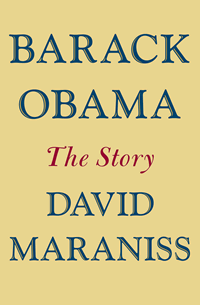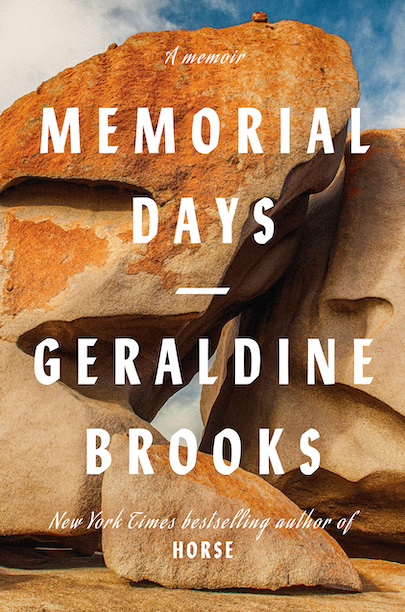The Arc of Destiny
In Barack Obama: The Story, Pulitzer Prize-winning journalist and biographer David Maraniss meticulously documents the making of the first multi-racial American president
In a recent blog entry titled “Black Like Him”, Esquire columnist Charles P. Pierce audaciously suggests that Barack Obama’s greatest obstacle in his first year as president has not been Eric Cantor, Paul Ryan, and the Tea Party or John Boehner, Mitt Romney, and Corporate America, but, rather, “the sanctimony of the people who thought he was doing them a favor by offering himself up as proof of the country’s essential goodness.”
“His primary job as president,” Pierce writes, “is to make sure his entire presidency is a demonstration of how far we’ve come as a nation on race, and that means he is not allowed to do anything or say anything that the white people who elected him can perceive to be divisive, because his primary function is to make them feel good about themselves.” Pierce’s argument, however hyperbolic, raises complicated and troubling questions. How much of the way Americans feel about Barack Obama is a projection of our own attitudes about a host of divisive, quintessentially American issues, from race to Medicare reform? How much of our sympathy or contempt derives from Obama’s inescapable positioning as ‘symbol?’ What would it mean for us to know the real Obama, instead of the one we’ve invented to fit our preconceived notions of who he’s supposed to be?
 In Barack Obama: The Story, Pulitzer-Prize-winning journalist and biographer David Maraniss provides a useful tool for demythologizing and humanizing the president, delivering what will likely stand for some time as the definitive account of Obama’s early life. Maraniss uses an unusual strategy: rather than skimming through the childhood years and focusing on the dramatics of Obama’s meteoric rise and the tempestuous years of his presidency, the narrative begins in Kansas and Kenya, tracing the family history of the Dunhams and the Obamas through three generations and concludes with the image of Obama in his car on the way to Harvard, still more than two decades away from the fateful November night in 2008 when he returned to Chicago to greet the euphoric masses in Grant Park as president-elect.
In Barack Obama: The Story, Pulitzer-Prize-winning journalist and biographer David Maraniss provides a useful tool for demythologizing and humanizing the president, delivering what will likely stand for some time as the definitive account of Obama’s early life. Maraniss uses an unusual strategy: rather than skimming through the childhood years and focusing on the dramatics of Obama’s meteoric rise and the tempestuous years of his presidency, the narrative begins in Kansas and Kenya, tracing the family history of the Dunhams and the Obamas through three generations and concludes with the image of Obama in his car on the way to Harvard, still more than two decades away from the fateful November night in 2008 when he returned to Chicago to greet the euphoric masses in Grant Park as president-elect.
The decision to trace Obama’s family history so exhaustively, omitting almost his entire political career, is striking. “I saw it as an opportunity to write about the whole modern world through this one family saga,” Maraniss recently told ABC’s Jake Tapper. President Obama himself does not actually appear in the biography until the seventh chapter, when Stanley Ann Dunham Obama gave birth to a son during a volcanic eruption on the big island of Hawaii. “When Kilauea erupts,” Maraniss writes, “according to local oral tradition, the volcano goddess Pele is telling them something.”
Maraniss goes on to document in detail Obama’s unconventional childhood: the almost instantaneous collapse of his parents’ marriage-of-necessity; his itinerant years in Indonesia with his mother and her second husband; his return to Hawaii, where, through a chance connection of his solidly middle-class grandparents, Obama gained admission to the prestigious Punahou School, which helped open the doors to a life on the mainland that led first through Los Angeles, then to New York, and eventually to Chicago, where Obama at last found the sense of belonging he had always lacked.
Much has already been made of Maraniss’s discovery of what in another era might have been explosive revelations about a sitting president seeking reelection. In his own memoir, Dreams from My Father, Obama has already acknowledged his youthful drug use, though he does so in the reflective, contemplative tone of a thoughtful adult trying to make sense of his childhood misadventures—not as a proud member of Punahou’s self-described “Choom Gang.” (“Choom” is Hawaiian slang for marijuana). Maraniss takes care to put Obama’s drug use into context—first on the pot-friendly island of Hawaii, and later in the laissez faire environs of Occidental College in Los Angeles, where Obama eventually traded in bong hits for the intense intellectual engagement that motivated him to transfer to Columbia University in New York after his sophomore year. Still, reading about Obama’s life as told by the author of First in His Class: A Biography of Bill Clinton, one can’t help but wonder how Bubba Clinton—the guy who “didn’t inhale”—would have fared while riding around with Barry Obama in the “Choom Van,” where penalties were assessed for exhaling a hit too quickly.
 The other potentially damning revelations in Barack Obama: The Story have to do with inaccuracies in Obama’s memoir. In the foreword to Dreams From My Father, Obama acknowledges the use of composite characters both to protect the privacy of past acquaintances and to create a more thematically cohesive narrative. Maraniss reveals the areas in which the president’s memoir exercises editorial license, attempting to explain why he chose to veer from the facts.
The other potentially damning revelations in Barack Obama: The Story have to do with inaccuracies in Obama’s memoir. In the foreword to Dreams From My Father, Obama acknowledges the use of composite characters both to protect the privacy of past acquaintances and to create a more thematically cohesive narrative. Maraniss reveals the areas in which the president’s memoir exercises editorial license, attempting to explain why he chose to veer from the facts.
In doing so, Maraniss located two of the women who form the composite “white girlfriend” of Obama’s New York years in Dreams: Alexandra McNear, a former Occidental classmate with whom Obama enjoyed a brief summer romance followed by a long-distance relationship through lengthy and intense correspondence, and Genevieve Cook, a young Australian with whom Obama had a longer relationship and with whom he briefly shared an apartment. Both women provided Maraniss with journals and letters from their time with Obama, which Maraniss excerpts at length. They reveal a young man in desperate search of an identity. They are notable for the extent to which they reveal Obama’s sense of rootlessness, and they demonstrate vividly Obama’s image of himself as a burgeoning young writer. “He had the sensibility of a writer or anthropologist, a participant observer,” Maraniss recently told Vanity Fair. “And he spent 10 years of his young adulthood trying to figure himself out. It was only once he had resolved the contradictions of his life that he felt ready to move on toward his political future.”
Maraniss also explores at length what has become the most crucial and delicate aspect of Obama’s rise to political power: his progress toward “blackness.” According to Maraniss, a child of mixed race parentage did not stand out in Hawaii; the name “Obama” was not unusual in a state populated mostly by Pacific island natives. But Obama never knew his father—he met him only once after his early infancy: at age twelve, when the elder Obama returned from Kenya to Hawaii for a brief visit. After returning from Indonesia, Obama was raised mostly by his white grandparents so he could attend Punahou while his mother lived abroad, conducting anthropological research. According to Maraniss, Obama became most acutely aware of his racial identity through his love of basketball, which, despite its deep traditions in the culture of his white Kansan ancestors, was by Obama’s youth already identified as a city game dominated by black stars.
Obama also endured a series of disparate but troubling encounters with racism, the most notorious appearing both in his memoir and in his famous speech on race in March of 2008 in the aftermath of the Jeremiah Wright controversy. Around the time he started college, Obama came home to find his grandparents in a heated argument. His grandmother wanted a ride to work because she was afraid of a man she’d seen at the bus stop; Obama’s grandfather refused, angrily whispering to young Barack, “she told me the fella was black. That’s why she’s scared. And I don’t think that’s right.” Maraniss deconstructs this incident—which Obama recounted, in various versions, in the memoir, the initial book proposal he’d sent to publishers, and the March 2008 speech—deepening the understanding of its impact.
In the proposal, Obama writes, “After they left, I sat on the edge of my bed and wept. I wept for my grandmother, who had sacrificed again and again for me, and had poured all of her lingering hopes into my success. She had never given me reason to doubt her love, and yet men who might easily have been my brothers could still inspire her rawest fears. I wept for her, and for myself. A part of me felt utterly alone.” In the memoir itself, however, Obama’s sense of being “utterly alone” appears not at the foot of his bed, but rather, in the company of Frank Marshall Davis, an elderly black poet he had befriended, and with whom he had shared his grandparents’ story. To Obama’s surprise, Davis comes to his grandmother’s defense. “Your grandma’s right to be scared,” Davis says. “She understands that black people have a reason to hate. That’s just how it is. For your sake, I wish it were otherwise. But it’s not. So you might as well get used to it.” Here, it seems, we find a plausible explanation for why Obama has persisted in his attempts to be the nation’s great conciliator in the face of an utterly intransigent opposition: he understands from experience both the righteous indignation of black America and the suspicion of an aging white population uneasy with the rapidly changing face of an increasingly diverse and fragmented nation.
Though its controversial elements have already led it to be used as ammunition in the mudslinging leading up to the November election, those elements almost disappear in the sweep and scope of this absorbing and insightful book. David Maraniss isn’t writing a campaign biography or a hack piece—on the contrary; Barack Obama is a work of history, as detached from politics as any work of literature can be. Though Maraniss’s admiration for Obama’s qualities is clearly apparent, so is his objectivity. Regardless of where one stands on the subject of Barack Obama, the trajectory of his life—his nomadic ancestors on both sides, his naively courageous mother and mercurial father, his global childhood, and his search for identity and purpose as a young man—can only be viewed as remarkable. Maraniss has spoken of plans to write a second volume in the future; for our time, however, he has provided a masterpiece that is both an authoritative biography and, through the window of an extraordinary life, the story of America—past, present, and future.
David Maraniss will discuss Barack Obama at the twenty-fourth annual Southern Festival of Books, held October 12-14 at Legislative Plaza in Nashville. All events are free and open to the public.


